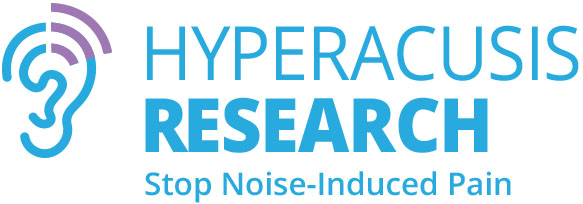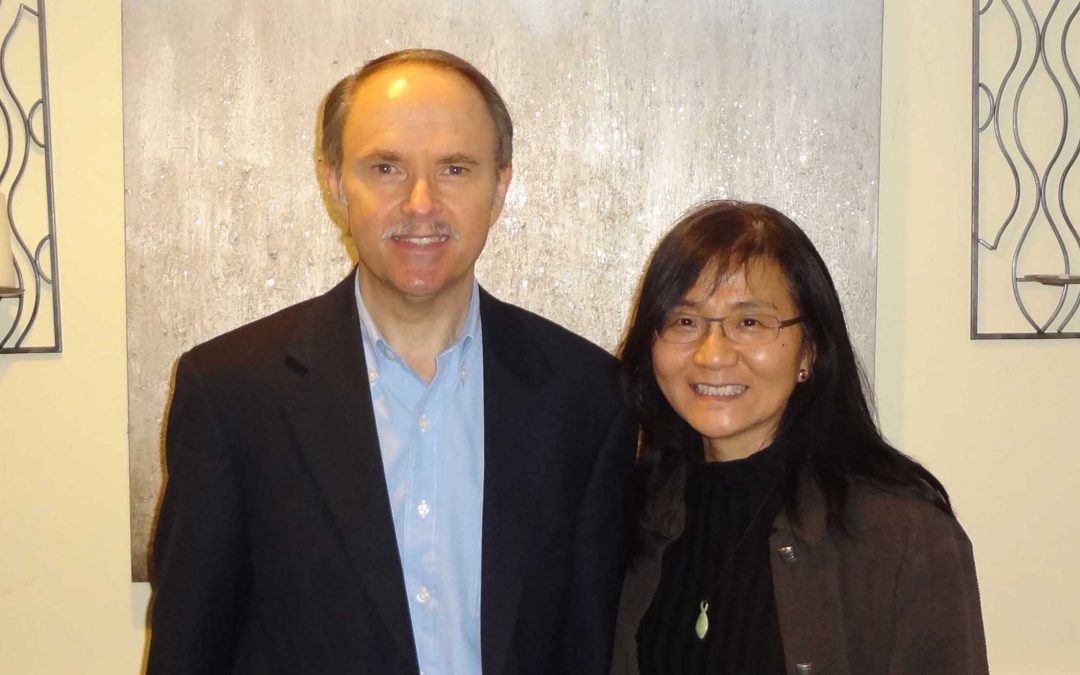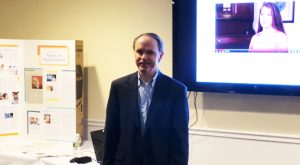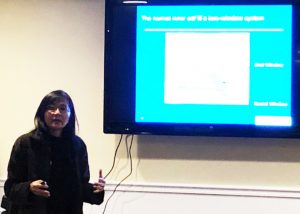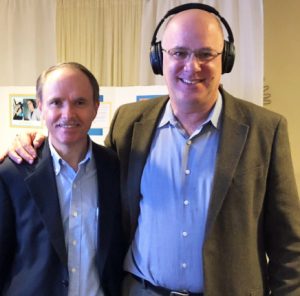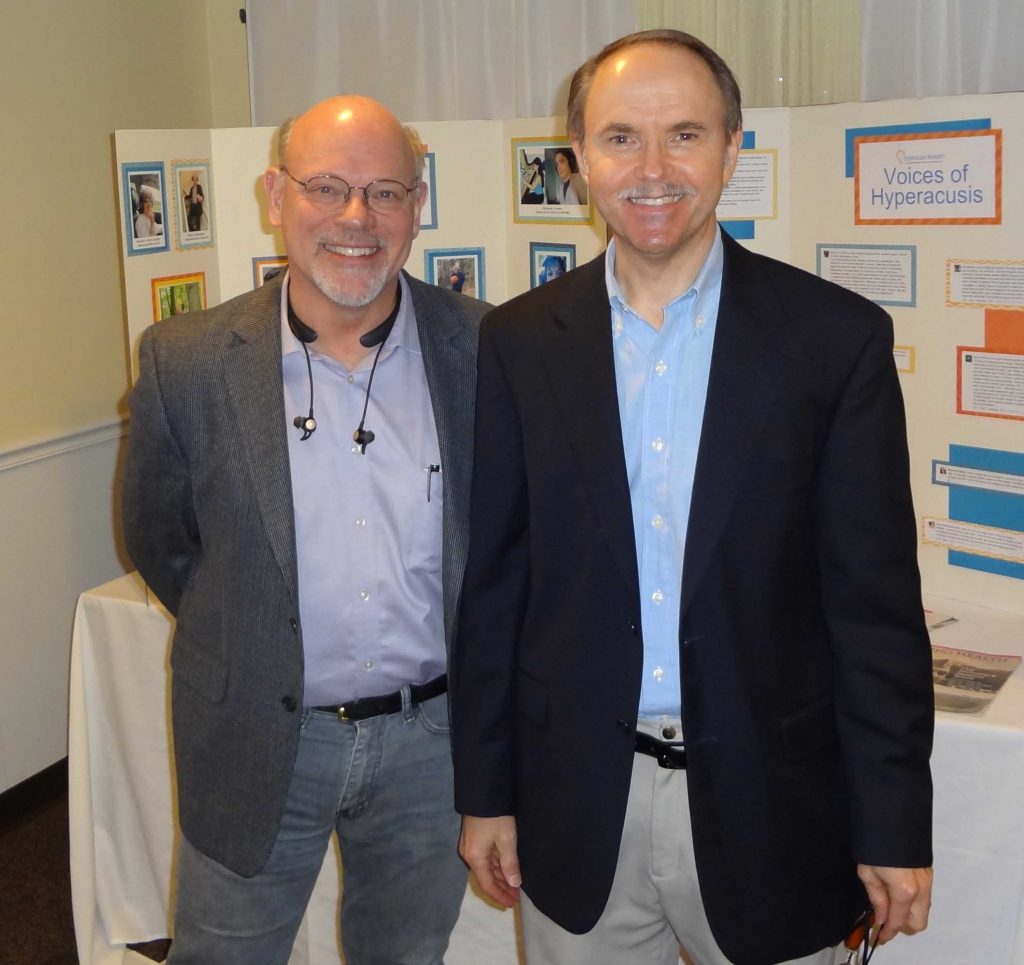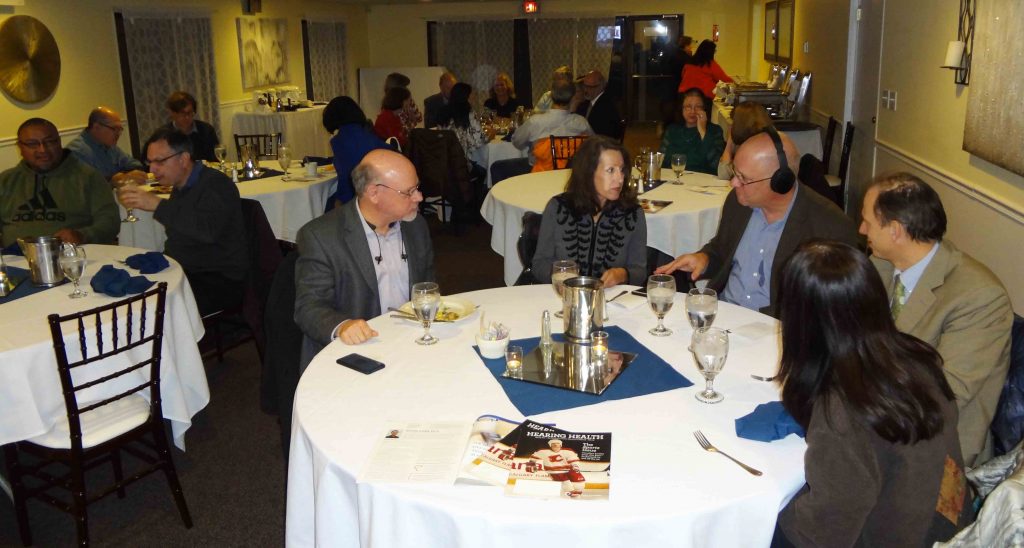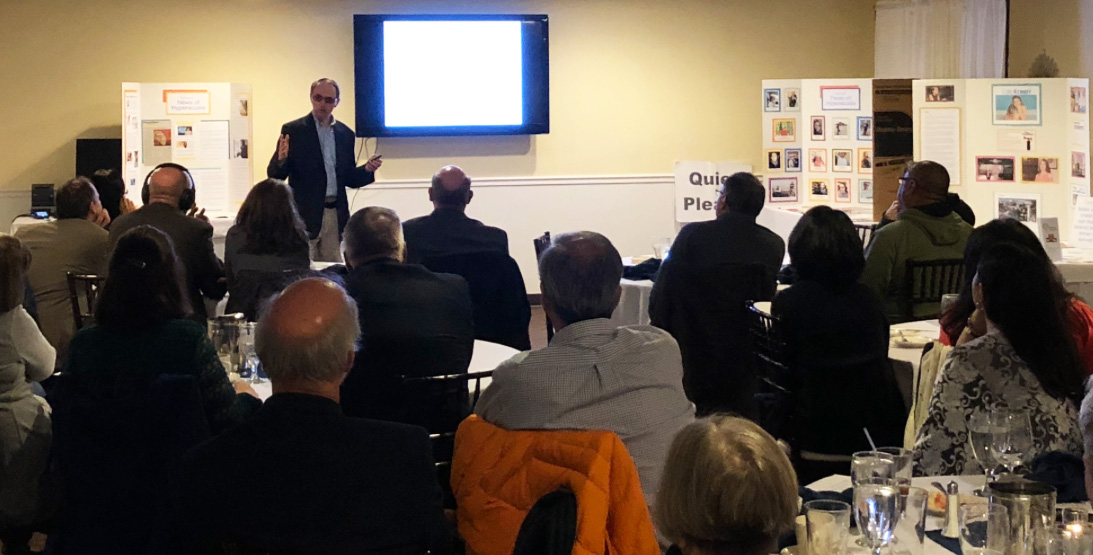A vital part of our annual fundraising season is our Boston-area Benefit Dinner. Combined with your efforts, we have raised more than $27,000 this year for research to find a cure for hyperacusis. Your support is making a difference in our efforts to push research forward to uncover the underpinnings of noise-induced pain.
Bryan Pollard, President of Hyperacusis Research, started the evening by showing our Cure4Cindy video. At age 13, Cindy acquired hyperacusis after being blasted with an air horn. Bryan shared other stories of sufferers, such as Monica Germino (mentioned in the Wall Street Journal), whose lives have been severely affected by hyperacusis. These sufferers are the reason we are doing everything possible to accelerate research.
Heidi Nakajima, PhD., Associate Professor of Otolaryngology at Harvard Medical School spoke about the amazing capabilities of the human ear and her work on auditory mechanics. Superior Canal Dehiscence (SCD) is a research focus of Heidi’s lab. About 55% of SCD patients experience conductive hyperacusis. SCD also typically includes vertigo or dizziness. This condition results from a thinning of the temporal bone around the superior canal. With SCD surgery, the opening (sometimes called a 3rd window) is patched to replace the missing bone and restore the original function. Since the standard surgery is very invasive, a different approach is to reinforce the round or oval window, through the ear drum, to attempt to dampen the 3rd window effect.
The modeling in Heidi’s lab has shown the round window surgery may not be achieving the desired effect and has the potential to create new problems. Additionally, this round window surgery is now proposed for hyperacusis alone, without evidence of SCD, and again the modeling does not support the proposed benefit. We look forward to following the work of Heidi, and others who are testing round window surgery for hyperacusis, to understand how patients may determine what is best in their individual situation.
Neil Donnenfeld, Vice President of the Acoustic Neuroma Association, told his story and explained his passion for making the world a quieter place. Neil first described his journey, starting with his own acoustic neuroma which was successfully treated. However, the outcome unfortunately included hyperacusis. Now he works on ways to reduce the environmental noises that can be very impacting to many people. Neil highlighted how Governor Baker’s Council on Aging’s Blueprint to Promote Healthy Aging in Massachusetts opens up the opportunity to connect auditory disorders to lower quality of life. Thus, a focus on reducing noise is beneficial not only for the elderly but also for the next generation.
Bryan concluded the evening by describing the work behind the scenes to initiate the new clinical trial for a hyperacusis hybrid device (see the full story here). The work we accomplished by raising over $210,000 for research to fund multiple grants with our partner the Hearing Health Foundation was vital to this and other new research programs. These grants have served as seed funding to promote needed research focused on hyperacusis. Researchers have greatly increased their success in obtaining NIH NIDCD grants including the one for the new device.
Please support Hyperacusis Research as you consider your end-of-year gifts so we can continue our important work to cure those whose lives have been put on hold by hyperacusis. You can donate online here or at our facebook page, facebook.com/hyperacusis research. Checks can be sent to: Hyperacusis Research Ltd, PO Box 1295, Marlboro MA 01752. Thank you!
See picture highlights of the evening below.
